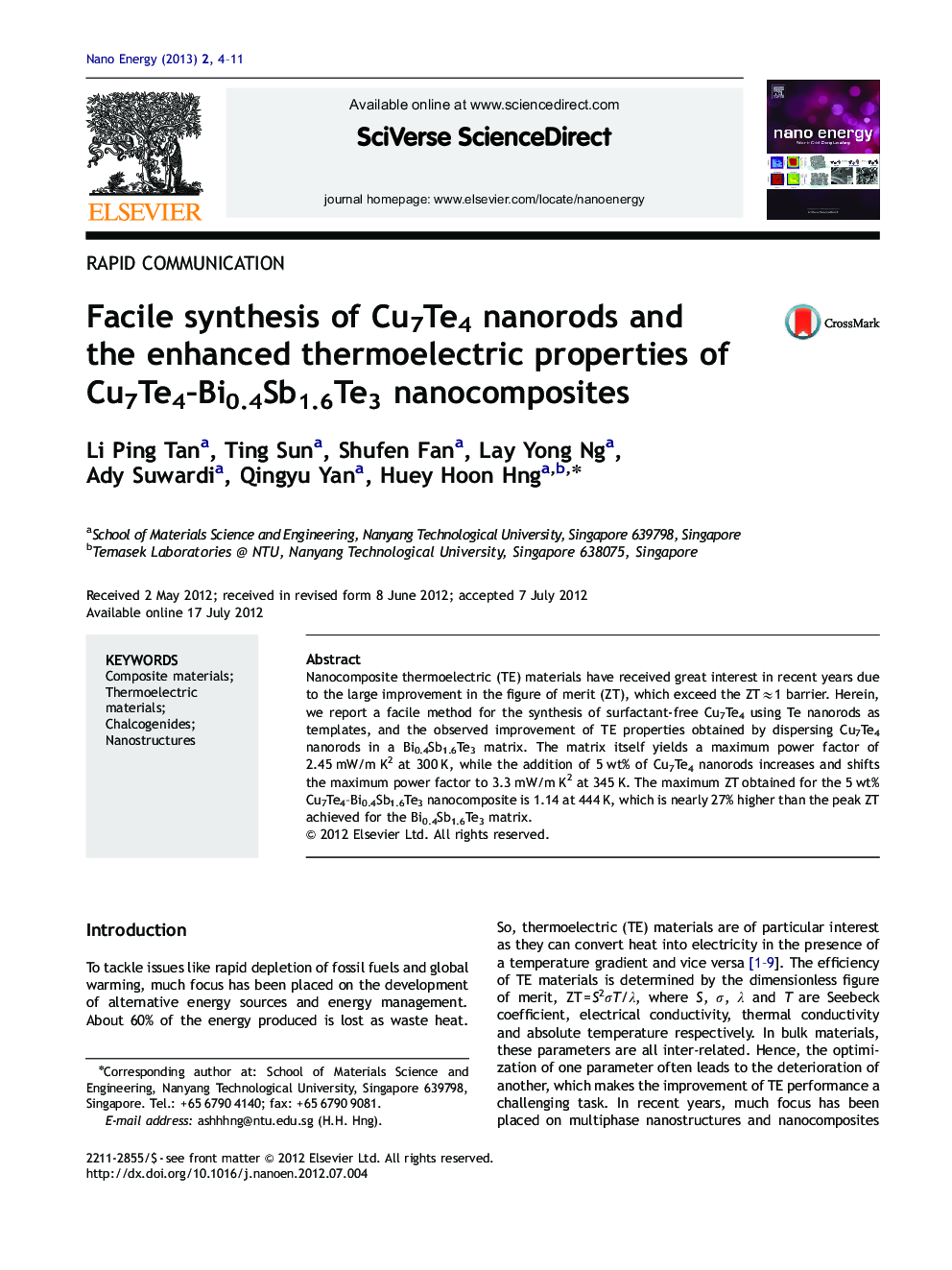| Article ID | Journal | Published Year | Pages | File Type |
|---|---|---|---|---|
| 1557967 | Nano Energy | 2013 | 8 Pages |
Nanocomposite thermoelectric (TE) materials have received great interest in recent years due to the large improvement in the figure of merit (ZT), which exceed the ZT≈1 barrier. Herein, we report a facile method for the synthesis of surfactant-free Cu7Te4 using Te nanorods as templates, and the observed improvement of TE properties obtained by dispersing Cu7Te4 nanorods in a Bi0.4Sb1.6Te3 matrix. The matrix itself yields a maximum power factor of 2.45 mW/m K2 at 300 K, while the addition of 5 wt% of Cu7Te4 nanorods increases and shifts the maximum power factor to 3.3 mW/m K2 at 345 K. The maximum ZT obtained for the 5 wt% Cu7Te4–Bi0.4Sb1.6Te3 nanocomposite is 1.14 at 444 K, which is nearly 27% higher than the peak ZT achieved for the Bi0.4Sb1.6Te3 matrix.
Graphical abstractFigure optionsDownload full-size imageDownload as PowerPoint slideHighlights► Simple and highly scalable synthesis of surfactant-free copper telluride nanorods. ► Improved electrical conductivity in nanocomposites with copper telluride addition. ► Maximum power factor shifted from 2.45 mW/m K2 at 300 K to 3.3 mW/m K2 at 345 K. ► Best ZT of 1.14 achieved is 27% higher than peak ZT of bulk. ► ZT>1 obtained over a large temperature range 360–500 K.
